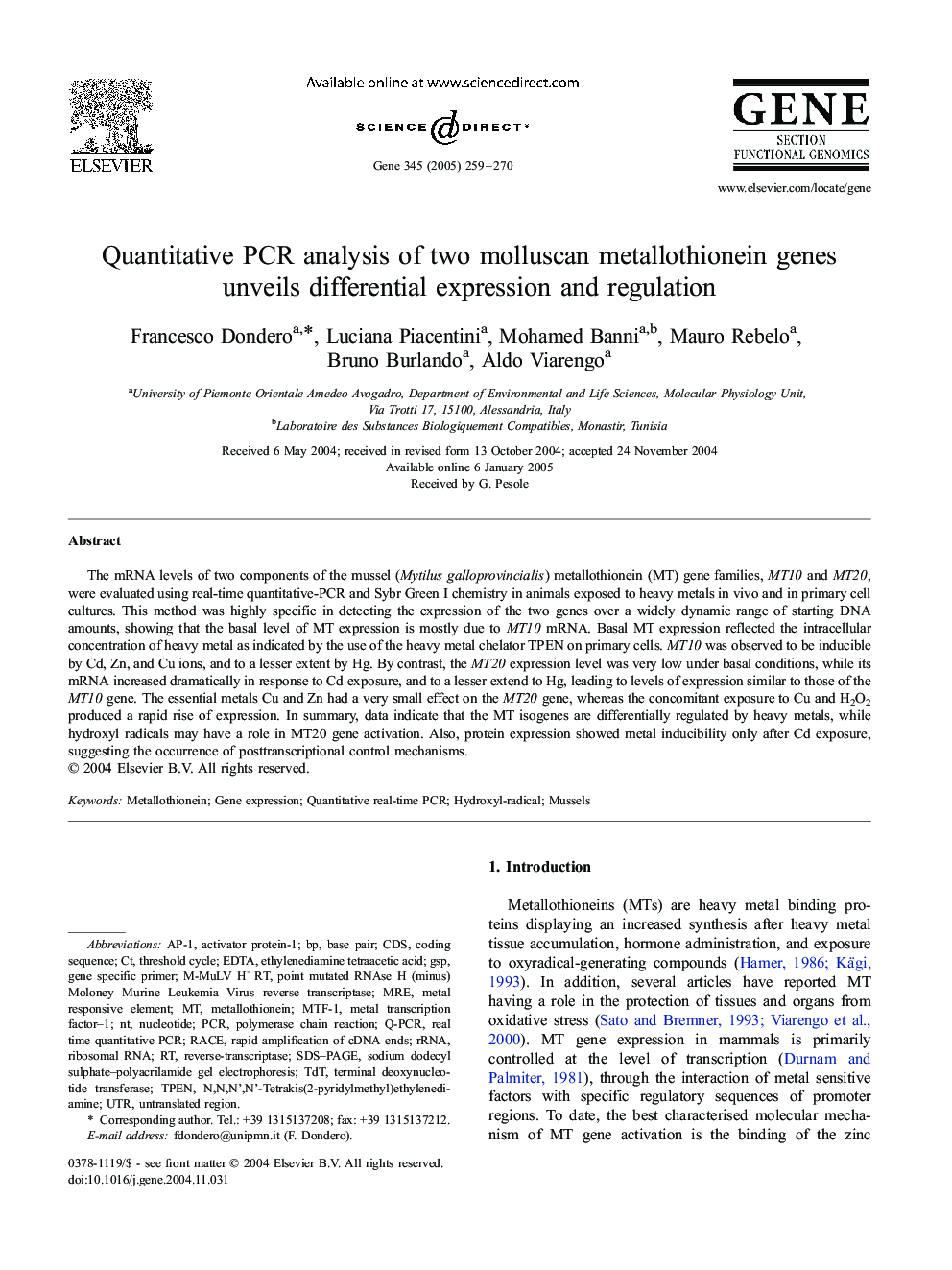| Article ID | Journal | Published Year | Pages | File Type |
|---|---|---|---|---|
| 9127242 | Gene | 2005 | 12 Pages |
Abstract
The mRNA levels of two components of the mussel (Mytilus galloprovincialis) metallothionein (MT) gene families, MT10 and MT20, were evaluated using real-time quantitative-PCR and Sybr Green I chemistry in animals exposed to heavy metals in vivo and in primary cell cultures. This method was highly specific in detecting the expression of the two genes over a widely dynamic range of starting DNA amounts, showing that the basal level of MT expression is mostly due to MT10 mRNA. Basal MT expression reflected the intracellular concentration of heavy metal as indicated by the use of the heavy metal chelator TPEN on primary cells. MT10 was observed to be inducible by Cd, Zn, and Cu ions, and to a lesser extent by Hg. By contrast, the MT20 expression level was very low under basal conditions, while its mRNA increased dramatically in response to Cd exposure, and to a lesser extend to Hg, leading to levels of expression similar to those of the MT10 gene. The essential metals Cu and Zn had a very small effect on the MT20 gene, whereas the concomitant exposure to Cu and H2O2 produced a rapid rise of expression. In summary, data indicate that the MT isogenes are differentially regulated by heavy metals, while hydroxyl radicals may have a role in MT20 gene activation. Also, protein expression showed metal inducibility only after Cd exposure, suggesting the occurrence of posttranscriptional control mechanisms.
Keywords
AP-1UTRrRNAreverse-transcriptaseMTF-1terminal deoxynucleotide transferaseMRETdTGSPTPENq-PCRRibosomal RNASDS–PAGEgene specific primerEDTAethylenediamine tetraacetic acidGene expressionrapid amplification of cDNA endscoding sequencebase pairReal time quantitative PCRMusselsmetal responsive elementMetallothioneinRaceuntranslated regionNucleotidepolymerase chain reactionquantitative real-time PCRPCRactivator protein-1threshold cycleCdS
Related Topics
Life Sciences
Biochemistry, Genetics and Molecular Biology
Genetics
Authors
Francesco Dondero, Luciana Piacentini, Mohamed Banni, Mauro Rebelo, Bruno Burlando, Aldo Viarengo,
